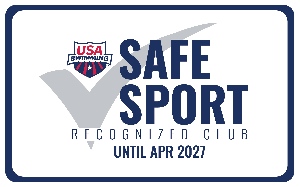SFST Practice Groups
The Sioux Fall Swim Team offers a wide variety of training group levels, each developed and structured with the purpose of creating a long-term passion for competitive swimming. We do our best to make swimming fun, exciting and fulfilling for each team member, from swimmers at the State and National level to those who recently completed swim lessons.
Young swimmers are continually going through tremendous changes both physically and emotionally, even within one season. Emphasis in proper technique training, aerobic development, and kicking make up the foundations of our program’s levels no matter what stages of growth and development a swimmer may be in at any point in time.
SFST’s practice group criteria has been designed to keep the athletes’ long term development in mind so they can continue success for many years to come. SFST also wants to instill the love for the sport that they can take with them for the rest of their lives.
DETERMINING THE BEST FIT
Because all kids develop at different stages and rates, a cookie-cutter method does not work. As a result, coaches take three things into consideration when determining swimmer placements in groups:
• Age of the swimmer
• Physical abilities (practice and meets)
• Emotional readiness
Many misunderstandings happen when swimmers (and parents) focus mainly on time standards and meet performance for group moves. Often, this mindset means that a swimmer's season successes (or failures) are based solely on whether the swimmer moves to a new practice group. Swimmers (and parents) should avoid this mindset in their training and when determining success; much more goes into the coach's decision to move swimmers to a new training group than just simply achieving "State" or "A" times.
AGE OF SWIMMER
- Form and Fitness - 9-14
- Red 1 & 2 - 6-10
- Red 3 - 8-10
- White 1 & 2 - 10-14
- White 3 - 11-14
- Blue 1 & 2 - 13-18
- Blue 3 - 14-18
Physical Abilities
• Practice Training
• Sustained effort level throughout practices and practice sets
• Attends practices regularly
• Prepared to begin practice on time
• Completes full practices and practice sets without multiple interruptions and stopping
• Successfully completes all challenge sets
• Trains up to ability in practices (example: swimmers who achieve higher time standards at meets, but continually train at the back of the group in practice are considered not swimming up to their ability level)
• Consistently training among the leaders of the group and/or lane
• Goes above and beyond the bare minimum
• Meet Performance
• Time Standards
• Event repertoire (i.e.: a mix of distances - 50s, 100s, 200s, and the four competitive strokes)
Emotional Readiness
• Demonstrates “coach-ability"
• Listens while the coach is speaking
• Grasps instructions/concepts quickly
• Able to receive feedback and apply instructions in training and competition
• Demonstrates emotional maturity
• Demonstrates sustained concentration on the task at hand
• Positive influence among teammates
• Acts responsibly in and out of the pool
• Has an “I can” attitude (especially when things are not going as hoped)
• Demonstrates resiliency and overcomes adversity
• Demonstrates intrinsic motivation
Coaches are not hasty in their decisions when determining group placement for the upcoming season. We observe swimmers' attendance, training habits, attitude, and maturity at practice to help determine the best fit for each swimmer.
Swimmers and parents should keep in mind that in the larger scheme of a swimming career, practice group placement is only temporary, and moving to a more rigorous group lies within the swimmer’s own preparation, attitude, and effort. Coaches place swimmers in groups where they will have the best opportunity to reach their full potential, as well as prevent injury and avoid getting overwhelmed and discouraged.




